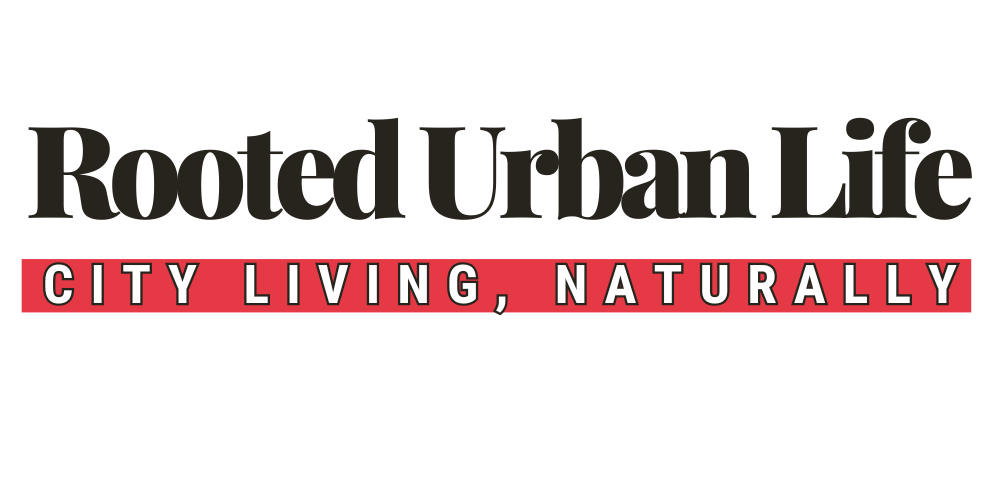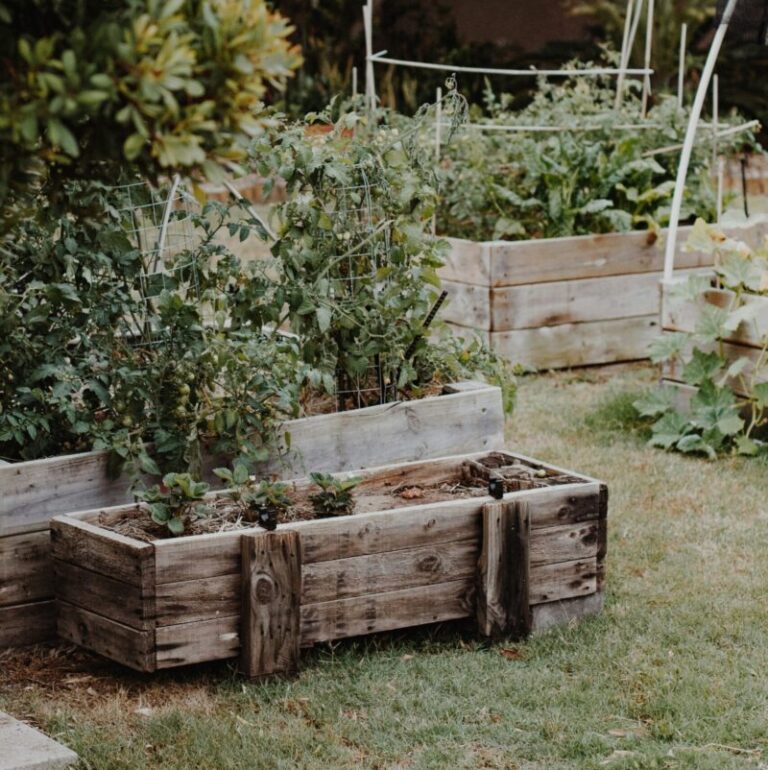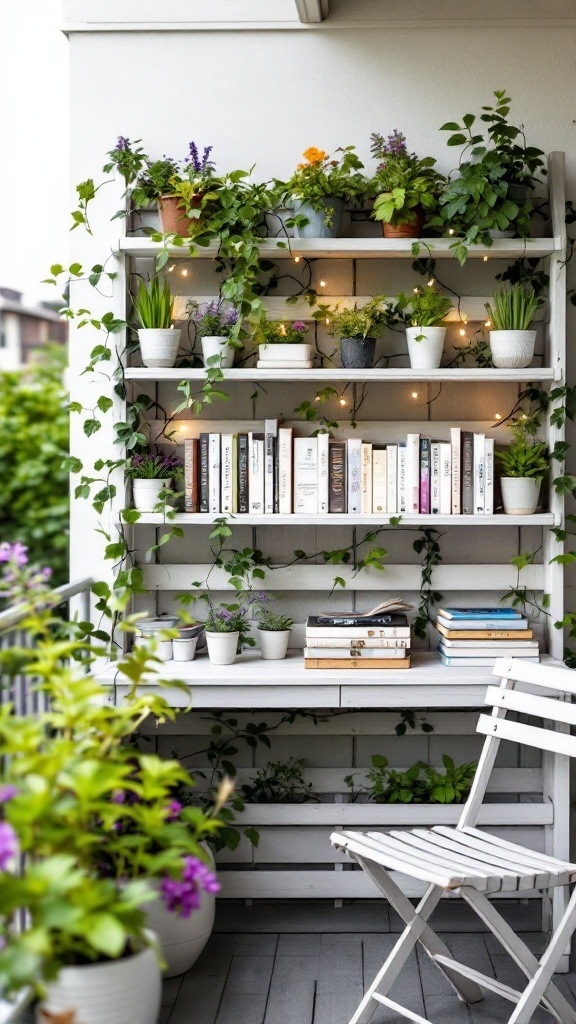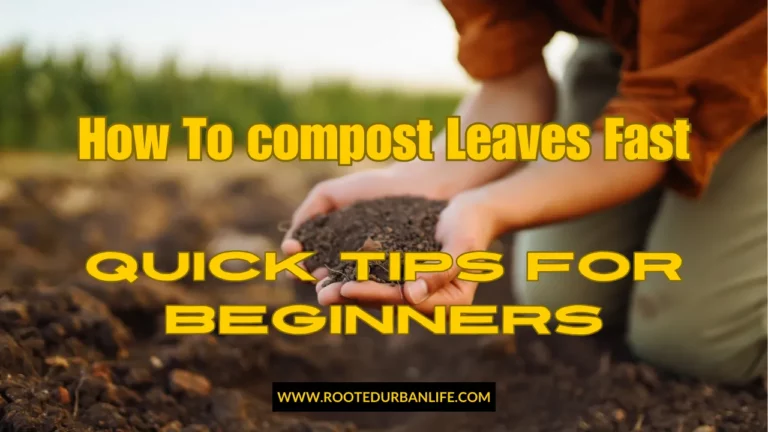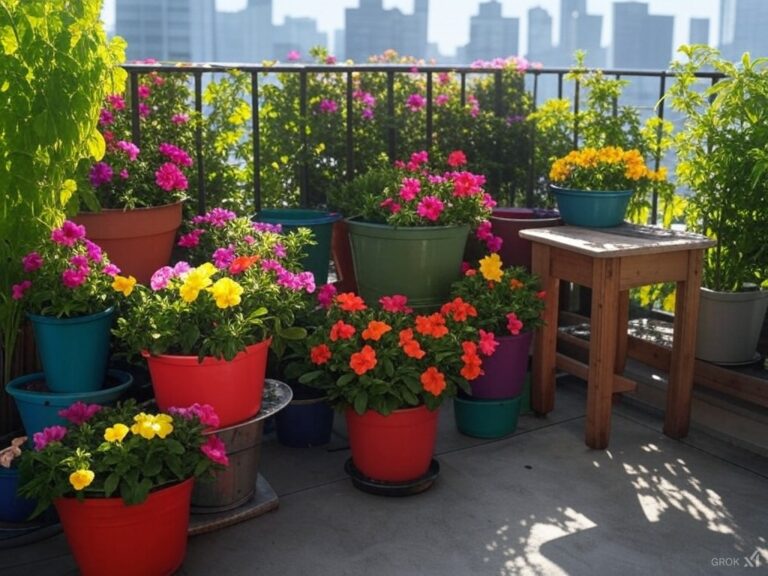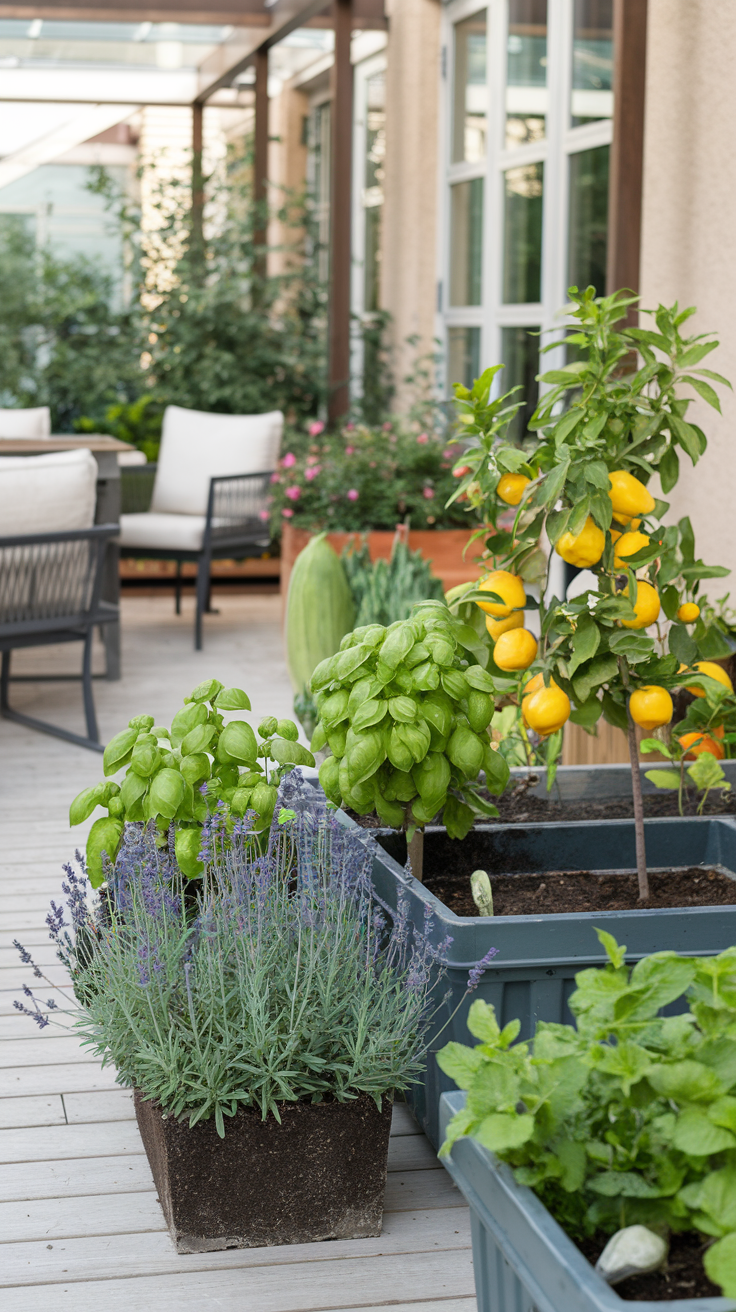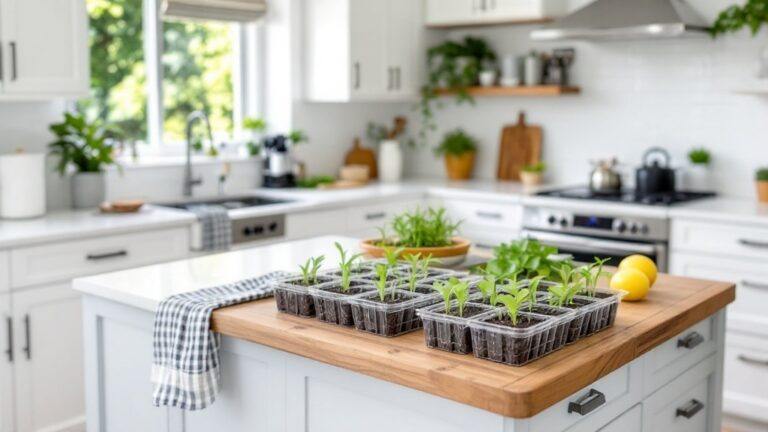Smart Irrigation Solutions for Container Gardens: Optimize Watering Efficiency and Plant Health
Caring for container gardens can be a rewarding experience, but it often comes with the challenge of maintaining the right moisture levels.
Smart irrigation solutions can simplify this task by providing precise watering based on your plants’ specific needs.
With the rise of technology, there are many options that ensure your containers get the right amount of water without the guesswork.
From drip systems to automated timers, these tools help you save time and reduce water waste.
You can set your irrigation system to run when it’s most effective, which keeps your plants healthy while also conserving resources.
Embracing smart irrigation not only enhances your gardening experience but also helps you nurture vibrant and thriving plants.
In addition to convenience, these solutions can lead to healthier plants and bigger yields.
Smart irrigation adjusts to weather changes and soil conditions, ensuring that your garden stays lush and productive.
With the right approach, you can enjoy a smarter way to care for your container garden while maximizing its potential.
Understanding Container Gardening
Container gardening allows you to grow plants in pots or other vessels. This method is great for small spaces and can be tailored to fit your needs.
You can enjoy the benefits of gardening while managing some challenges.
Benefits and Challenges of Container Gardens
Container gardens come with several benefits. They are perfect for limited spaces like balconies or patios. You have control over the soil quality, which can lead to better plant health.
Some key advantages include:
- Flexibility: You can move containers to find the best light and climate.
- Pest Control: It’s easier to protect plants from pests.
- Variety: You can grow different types of plants in one spot.
Despite these benefits, there are challenges. Containers can dry out quickly. This might require more frequent watering.
You also need to consider:
- Limited Space: Roots may become bound in small pots.
- Nutrient Management: You have to be mindful of feeding your plants.
Selecting Containers and Plants
Choosing the right container is essential for healthy plant growth. Ensure your container has drainage holes to prevent overwatering. Materials like terracotta, plastic, and ceramic are common choices. Each has its pros and cons.
When selecting plants, consider:
- Size: Choose plants that fit in pots according to their expected growth.
- Light Needs: Match plants with your space’s light conditions.
- Water Requirements: Some plants need more water than others.
By considering these factors, you can create a thriving container garden tailored to your lifestyle.
Smart Irrigation Systems Overview
Smart irrigation systems help you manage watering your container gardens effectively. These systems improve water efficiency and make it easier to provide the right amount of moisture for your plants. Let’s look closely at smart irrigation and its essential components.
Defining Smart Irrigation
Smart irrigation refers to advanced watering technologies that use sensors, timers, and weather data. These systems schedule and adjust watering based on current conditions.
By using smart technology, you can ensure your plants receive the right amount of water without overwatering.
You can connect these systems to your smart devices, allowing you to control them from your phone or computer. This means you can monitor your garden from anywhere, making it convenient and efficient. Smart irrigation can greatly enhance the health of your container plants.
Components of Drip Irrigation Systems
Drip irrigation is a common form of smart irrigation. It delivers water directly to the root zone of your plants. The main components include:
- Emitter: Releases water slowly to reduce evaporation.
- Tubing: Carries water from the source to the plants.
- Filter: Removes particles to keep the system running smoothly.
Drip irrigation systems can be configured for different types of container gardens. You can customize them to meet specific watering needs. This type of system is very effective in conserving water while maintaining healthy plants.
Advantages of an Automated Watering System
An automated watering system takes the guesswork out of caring for your garden. Here are some key benefits:
- Water Efficiency: Delivers precise amounts of water when needed, reducing waste.
- Consistency: Ensures plants receive regular moisture, promoting growth.
- Convenience: Automatically adjusts to weather changes, adjusting the watering schedule.
With an automated system, you can save time and effort. You no longer have to worry about daily watering, allowing you to enjoy your garden more. This technology is beneficial for busy gardeners or anyone wanting to simplify their gardening routine.
Designing Your Drip Irrigation Layout
Creating an effective drip irrigation layout involves careful planning. You need to calculate water needs, select the right components, and set up a schedule. Understanding these key aspects will help you maintain healthy container gardens.
Calculating Water Needs and Scheduling
Start by assessing the water needs of your plants. Different plants require different amounts of water daily. Check the average soil moisture levels and adjust your schedule accordingly.
A good rule is to water container gardens about once a week. However, consider the weather and humidity. In hot, dry conditions, you might need to water more often.
Use a chart to track your plants’ needs:
| Plant Type | Water Requirement (gallons/week) |
|---|---|
| Herbs | 1-2 |
| Vegetables | 2-3 |
| Flowers | 1-2 |
Choose a watering schedule that meets these needs while avoiding overwatering, which can damage roots.
Installing Tubing and Emitters
Next, it’s time to set up the tubing and emitters.
Choose high-quality tubing that fits the layout of your containers. Use ¼ inch tubing for close placements and ½ inch for longer runs.
Position emitters near the base of each plant. They will deliver water directly to the root zone.
Consider the flow rate of each emitter, which is usually measured in gallons per hour.
A common setup is:
- 1 emitter per small plant (like herbs)
- 2 emitters per medium plant (like tomatoes)
- 3 emitters for larger plants (like squash)
Be sure to attach emitters securely to prevent leaks.
Incorporating Sensors and Timers
To optimize your irrigation system, integrate sensors and timers.
Soil moisture sensors can monitor when your plants need water. Connect these sensors to a battery-operated timer for automation.
Set the timer based on calculated water needs. Most timers allow you to program specific watering times and durations. This ensures that you water consistently without wasting resources.
Consider using a timer with multiple settings. This allows for adjustments in case of unexpected weather changes.
By using sensors and timers, you can maintain the right soil moisture levels effortlessly.
Maintenance and Troubleshooting
Maintaining your smart irrigation system helps ensure your container garden thrives. Regular checks can prevent common problems. Knowing how to troubleshoot will save you time and water.
Regular Inspection and Cleaning
Inspect your irrigation system at least once a month. Check for debris in the filters and clean them regularly. A clogged filter can lead to poor water flow and cause overwatering.
Make sure the pressure regulator is functioning well. If the pressure is too high or too low, it can harm your plants.
Clean any hoses or emitters to prevent blockages. Look for leaks in hoses or connections, as they can waste water.
Keep an eye on the soil moisture levels. If the soil is soggy, you might be overwatering. Adjust timers or sensors accordingly to prevent fungal diseases.
Identifying Common Issues
Watch out for signs of overwatering, such as yellowing leaves or wilting. These can indicate poor drainage or broken emitters. Fungus may grow in overly damp conditions, harming your plants.
Check if all emitters deliver water evenly. If some containers are dry while others are wet, you may have a blockage.
Regularly test your system’s water flow. Use bucket tests to see if each section provides the right amount of water.
Look for water wastage, which can occur from leaks. Notice any unwanted puddles around your containers. These signs mean it’s time to troubleshoot your system.
Adjustments and Repairs
If you notice any blockages, turn off the water and clean the affected parts. Use a soft brush for filters and emitters.
Replace any damaged components immediately to prevent further issues.
Adjust the pressure regulator to match your plant’s needs. If you often see water pooling, you might need to redirect water distribution.
For timers, double-check settings and battery levels. If they aren’t working, replace batteries or the timer itself.
Making small adjustments often prevents bigger problems later. Regular maintenance keeps your garden healthy and saves water.
Optimization and Sustainability
Using smart irrigation for container gardens not only saves water but also promotes sustainable gardening practices. By combining efficient watering methods with eco-friendly materials, you can maintain a vibrant garden while minimizing your environmental impact.
Maximizing Water Efficiency
To maximize water efficiency, choose a smart irrigation system that matches your garden’s needs.
These systems often include sensors that detect soil moisture levels. This means you only water when necessary.
Consider using drip irrigation for containers. It delivers water directly to the plant roots, reducing evaporation.
Another option is to install a timer for your watering schedule. This prevents overwatering and ensures each plant receives the correct amount of water.
Maintain your system regularly. Check for leaks or clogs that can waste water. Regular maintenance helps keep your container garden healthy and thriving.
Sustainable Practices and Materials
Select sustainable materials for your container garden to enhance its eco-friendliness.
Use pots made from recycled materials or biodegradable options. These choices can reduce waste and support your garden’s growth.
Also, consider incorporating rainwater harvesting. Collect rainwater in barrels for irrigation. This practice conserves water and reduces your utility bills.
Lastly, choose native plants suited to your climate. They require less water and care than non-native species.
This not only supports local wildlife but also lowers the need for extensive maintenance. By adopting these practices, you create a more sustainable container garden.
Frequently Asked Questions
Here are some common questions about smart irrigation for container gardens. You can find answers about different systems, their effectiveness, and options for creating your own setup.
Q:What are the best-rated smart irrigation systems for small-scale container gardens?
A: Some top-rated smart irrigation systems for container gardens include the Rain Bird Smart Irrigation Controller and the Rachio Smart Sprinkler Controller.
These systems can be adjusted based on weather conditions, and they help you save water while keeping your plants healthy. Many users find them easy to set up and use with mobile apps.
Q: How does a homemade drip irrigation setup compare to a professional system for potted plants?
A: A homemade drip irrigation setup can be cost-effective and customizable. You can use parts like tubing and emitters to suit your garden’s specific needs.
Professional systems often offer features like automation and weather-based adjustments, which can simplify care for your potted plants.
Q: What are the pros and cons of using drip irrigation versus other methods in watering outdoor potted plants?
A: Drip irrigation delivers water directly to the soil, reducing waste and evaporation. It can save time and effort compared to hand watering.
Other methods, like sprinkler systems, can cover a larger area but may waste more water and risk overwatering certain plants.
Q: Can non-toxic materials be effectively used in constructing a drip irrigation system for a container garden?
Yes, you can use non-toxic materials like PVC, silicone, or food-grade tubing for your drip irrigation system.
These materials are safe for your plants and the environment. They are durable and provide a reliable way to water your garden.
Q: What automated systems are available for efficiently watering multiple outdoor container plants?
A: Automated systems like timers or smart controllers can efficiently water multiple container plants.
Some options include the Blumat Automatic Watering Stakes and smart drip systems that connect to Wi-Fi. These systems adjust according to the soil moisture level or weather forecasts.
Q: Is an olla-based system more effective than a drip irrigation system for container gardening?
A: An olla-based system uses buried clay pots to slowly release water into the soil. This method conserves water and can be effective in certain conditions.
However, drip irrigation systems offer more control and flexibility for most container gardens. They allow for specific adjustments based on plant needs.

